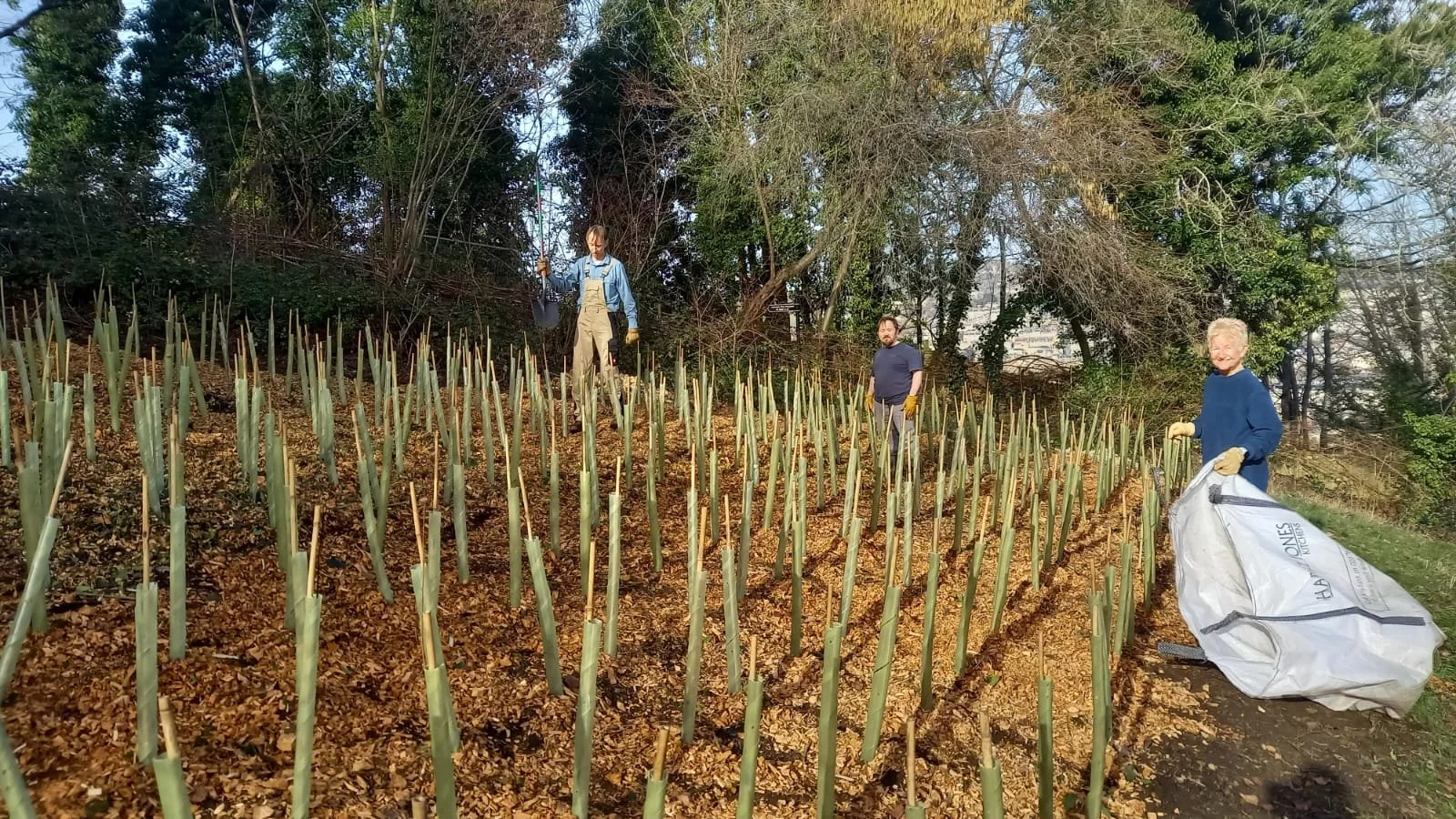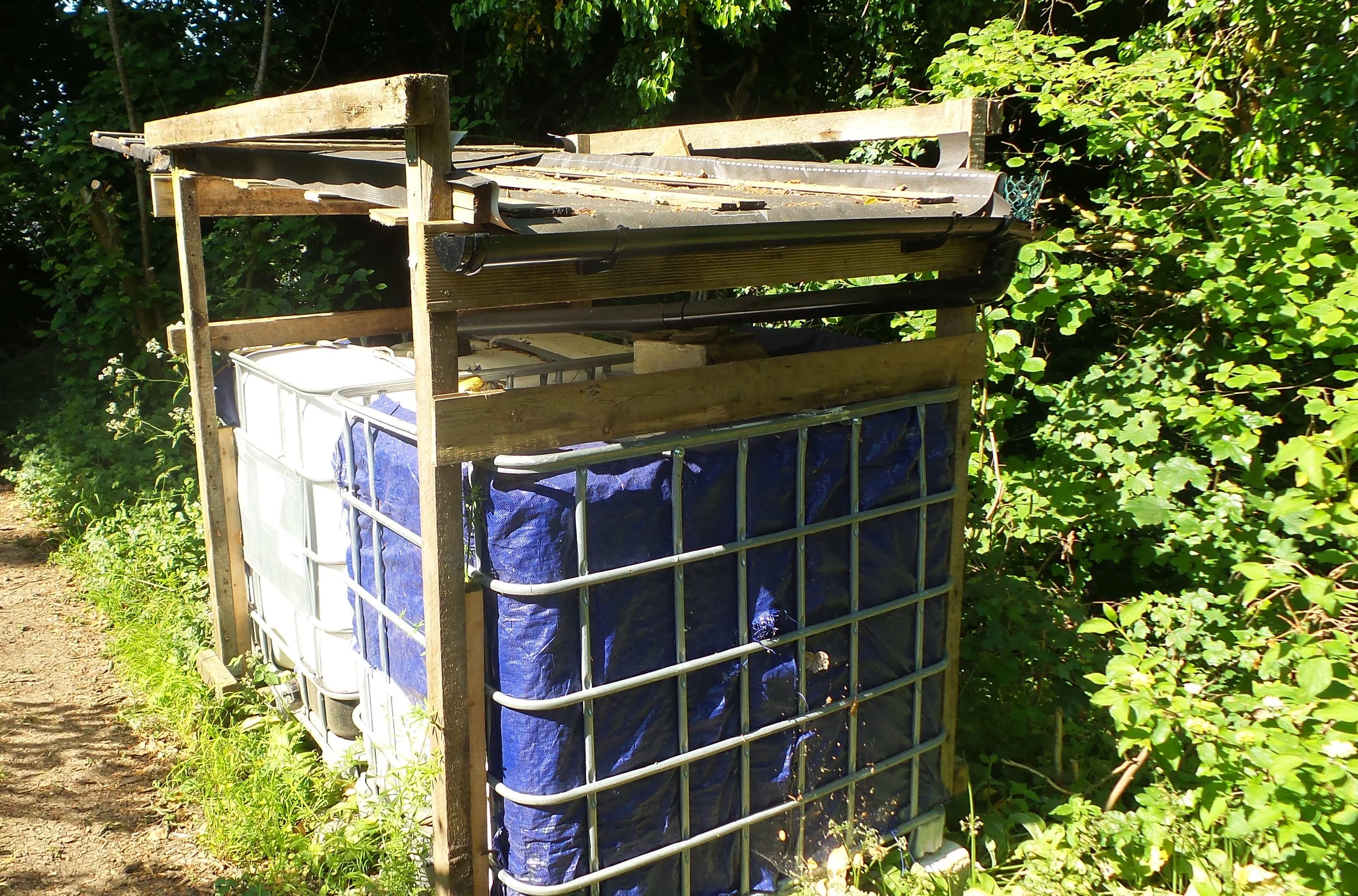Lyncombe Hill Fields
The Friends of Lyncombe Hill Fields are helping Nature to thrive. Tiny forests? I had read about them but had no idea there were any in Bath. And there’s much more to enjoy at Lyncombe Hill Fields.
A walk and talk with Maurice Tennenhaus
On September 1st 2020 the Friends of Lyncombe Hill Fields were awarded a Licence to Manage the ten 10 acres of Lyncombe Hill Farm.
The beginning
‘Land to rent’: one of the area’s gates suddenly sprouted that sign. I talked to local people and community groups to try to raise the money. We went into very long negotiations with the Council and the arrangement changed from being a lease to being a licence to manage the land. That was three years ago. We now have a three-month rolling contract.
Lyncombe Hill Fields is a managed landscape. Managed for nature, but we don’t claim to be rewilding. It used to be farmland, and is mainly old meadows and overgrown hedges. The views from here are to die for. They're really extraordinary.
Framing Autumn (View from one of the fields - photograph by Jackie Terrett)
We set up a community interest company, limited by guarantee. That is for our protection and to protect the land, so that even if we make massive profits, we can't stuff our pockets with coins and walk away. We have public liability and employers’ liability insurance. Our volunteers are treated as employees for insurance purposes and that's quite expensive.
None of the three directors has had a career in horticulture or land management, although I used to have a hobby interest, helping to manage a piece of land owned by a fishing club. We have learned by doing. There are tons of information online about how to do a particular thing and usually it’s not that complicated. The message I would send to anyone starting out is: talk to people who’ve done it and do lots of research online.
Covid helped
From the start we needed volunteers. It sounds strange to say this but Covid was really good for us. Suddenly people found this open space on their doorstep. There was an explosion in the number of people walking here. We held a Zoom meeting where we asked for volunteers. At first it was about 10 people and then it suddenly just went through the roof. People were very, very keen to do stuff. Now in year three, we've still got the legacy of that – but we always welcome more. We meet Sunday mornings and, in the summer, we do Sunday mornings and Wednesday evenings after work.
Harvest Festival (Photograph by Peter McSweeney)
Volunteers are not saints. They have to enjoy what they are doing. If they don’t enjoy it, even the thought of helping the planet isn’t enough long-term. Our volunteers do it for friendship, for interest and to learn new skills. They range from young people in the Duke of Edinburgh’s Award scheme to people as old as me.
Virtually all of the forks, shovels, spades and mattocks we use have been given to us. We're never too proud to take stuff.
We have special interest groups – bird watching, photography and history.
Hot work in the sun (Photograph by Jackie Terrett)
The meadows
There's a bit of a myth that wildflowers only like poor soil. You can grow wildflowers in top grade potting compost. It's just that other things grow better than them. Wildflowers have to be given a chance, because they've adapted to poor soil where grass might not grow well. That’s why we have a grass mowing regime designed to help them. The whole site is just over 10 acres and we mow 5. We mow the grass twice a year: in July after the wild flowers have seeded and then again usually in September or October. This lets us get a big volume of grass off. All the grass is cut to ankle height and everything is removed so the soil doesn’t benefit from the cuttings. We are already seeing more cowslips. We have a resident kestrel that knows the sound of the mower. After about half an hour of mowing, the kestrel turns up hoping to catch some mice.
We are reducing the nettles and brambles in some areas, which is a lot of work, but there are still plenty of both on the site.
In future, when we mow and take off grass, that is mostly grass and wild flowers and not grass and nettles and docks and so on, we're hoping to start selling the hay. We have to batch it up anyway to remove it and we could make bales the size that people with pets would want.
We have planted Yellow Rattle (Rhinanthus minor), also called ‘the meadow maker’. Basically, its roots weaken the adjoining grass by taking nutrients away, leaving bare soil where the wild flowers can come in.
Bird feeders
There is a philosophical argument about whether we should be interfering. Well, I'm on the interfering end of the argument. If you want the annual wildflowers to get going, you have to introduce them. We've got bird feeders, bird boxes and bat boxes. If you want birds and bats, you should encourage them.
I call the inner field the ‘lab’. It is the most fertile of all of the area. It was going to take one hell of a lot of work to turn it into a wildflower meadow. We mowed it the hardest but the grass is still very thick. So, we decided to plant stuff in it to see how well that works. We have children from Widcombe Infant School come up every year. They help us plant snowdrops, bluebells and cowslips. We believe one of our roles is to engage local children. We take pictures of the flowers so they can see what they’ve done. They are very excited by it. A lot of those kids don't have a garden. What’s really surprising is that a lot of them had never been here before. Some of them now bring their mums and dads here.
Gravel spreaders (Photograph by Jackie Terrett)
We have no intention of this being a park, so there's nothing formal about it. Even the paths we create are very casual but we are adding stones to the ones that turn into quagmire in the winter. Public access is very important. However, the site has loads of slopes, so it is difficult for wheelchairs. We have seats. Partly our philosophy and partly our finances dictate that we recycle loads of stuff. So, the seats are made almost entirely of recycled materials, and with no concrete.
The hedgerows
The hedgerows are very ancient, though they're not hedgerows any more. They're really just lines of trees because the site hasn't been managed at all for 70 or 80 years. We have two of the biggest field maples (Acer campestre) you're ever likely to see. They’re thirty feet tall.
We are leaving 3-4 metres uncut on the edge of one of the hedgerows. It will become a track where saplings will grow. Elders (Sambucus nigra) are already growing there. The hedge will be unkempt but it will become a corridor for wildlife.
There are remnants of layering in some of the other hedgerows. There was a reasonable mix of trees when we took over, but we've added a lot more.
Tiny forests
Tiny forests is an idea that came to prominence about 50 years ago when Akira Miyawaki, a botanist in Japan, developed a different method for planting trees. It involves planting native species very densely to mimic a mature natural forest. They are called tiny forests because they can be grown in a very small area.
Tending tiny forest (Photograph by Pete McSweeney)
We have three tiny forests on site. One is planted at a density of two-and-a-half saplings per square metre. It is two years old and the trees are growing quickly. There’s a field maple that has reached five metres already. That’s good news for sequestering carbon and for supporting wildlife. That forest is planted on a slope. We incorporated a stone bund halfway up the slope – this is a barrier that slows down any rainwater run-off and gives it time to soak into the soil.
Our newest tiny forest is planted at a density of four saplings per square metre. Some students from Bristol University are measuring and comparing the growth rates in the different forests. Two of the forests contain about 600 trees each and the third has around 450. We’ve had about a 3% casualty rate. After three years we stop watering and replacing the casualties and just leave them alone.
Rain collector
We've discovered that trees are very susceptible to drought at the start of their lives. To begin with we were carrying 10 litre watering cans to water them all. It was hard work, so we came up with a different solution: intermediate bulk carriers. They are what is used to transport orange juice or wine or other liquids on container ships. In that business they are single use – it’s not worth cleaning them and sending them back. So, there's a healthy second-hand market in them. We put ours near the tiny forests and build a sloped roof over them to catch water and collect it in the containers. Now we can pump the water out to the trees.
Welcome to the North field (Photograph by Pete McSweeney)
The first year we planted trees, they came from Scotland. This year they came from Shropshire, but we are about to do even better. We are providing a temporary nursery for More Trees BANES, who collect seeds locally, plant and grow them until they are established saplings, then plant them throughout BANES. We will have 1,000 saplings about 300 mm tall to look after. When they get bigger, they will be moved on to their permanent sites but we’ll probably get to keep some of them. So, we’re still planting trees.
June 2023
The Friends of Lyncombe Hill Fields website is at friendsoflyncombehillfields.co.uk
More Trees BANES website is at www.moretrees.earth







